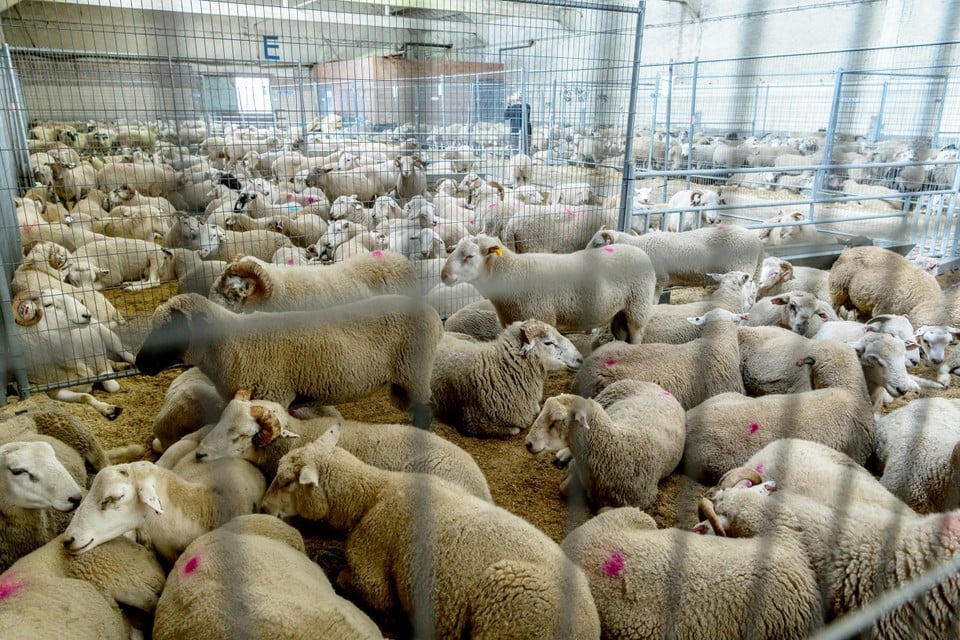Massal death hippos in the Congo Nature Park due to contamination with anthrax
/s3/static.nrc.nl/images/gn4/stripped/data130727929-837c07.jpg)
In the Democratic Republic of Congo, at least fifty hippos died in an anthraxinfection last week. Other animals, including water buffalo, have also died. Although antraxinfections often occur in Africa, experts are concerned: the current large -scale outbreak can have major consequences for humans and animals in the Virunga National Park – the oldest park in Africa. The entire ecosystem comes even further by being under pressure.
1. What is Anthrax?
Antrax or anthrax is caused by the bacteria Bacillus Anthracis And belongs to the zoonoses: diseases that can jump from animals to people (and vice versa). Infection can take place in different ways: via the air, by eating contaminated meat or through wounds in the skin. Inhalation is the most dangerous of those three. What makes antrax bacteria extra treacherous is that they form traces that can slumber in the soil for years – and then to become active again when the ground is turned up again.
2. Why do hippos die massively?
Hippos are known for their aggressive character and are counted among the deadliest animals on earth. But in terms of eating behavior they are among the big grazers. After sunset, they come out of the water with their logs to eat grass. And it is precisely there that the danger lies: when grazing they toss the bottom and the anthrax tracks are released.
It is not the first time that an anthraxinfection affects a large group of hippos: also in 2011 in Zambia and in 2017 in Tanzania the animals died in bushes. But those outbreaks took place in the dry season, while in the Democratic Republic of Congo the rainy season is in full swing.
« Especially hippos who live close to each other in large numbers, » says aquatic ecologist and Nijlpaardexpert Jonas Schoelynck of the University of Antwerp. « You see, for example, when they all look up the scarce water spots in periods of drought, but also when they are hunted – for example in Virunga. »
For years there have been large conflicts between rebel groups in the area and the animals are also the victims of that. They are eaten and lose habitat. Rangers who want to protect the game are killed. « Hippos are territorial: In general, one male lives with several women and offspring. But now you see that males are fighting each other. The winner also gets the harem of the loser, with an extra large group that is therefore extra susceptible. »
3. How dire is the situation in Virunga?
In the 1970s, the hippopotamal population in Virunga was the largest in Africa, with more than 30,000 animals. In time frame of a few decades, that number is decimated as a result of the conflicts: there are now no more than 2,500. And that is now the blow of the Spleenvure infections. They are not only dangerous for the hippos themselves. Even people who live in the area can get sick, by eating contaminated meat or by inhaling the tracks.
The large -scale outbreak can even harm the ecosystem, says Schoelynck. « Hippos get through the grass that they eat silicon and they poop that in the water. Silicon forms the basis for diatoms there: pebble algae. If you remove the hippos, those algae will also disappear. Then there are harmful algae instead, and that has negative consequences for the entire food web. Less fish also means even less food for local residents. «
4. Do we also have to be afraid of Anthrax in the Netherlands?
In the Netherlands, Siltvuur no longer occurs in nature. In 2001, shortly after the terrorist attacks in New York, there was increased alertness because so -called ‘powder letters’ were sent in the United States: envelopes with spleenvuur bacteria in it. Finally died of that form of bioterrorism five people; Fake letters were sent in the Netherlands, but not in any of them was Antrax found.
However, there are so -called ‘spleenvuurbosjes’ in the Dutch landscape: groups of trees that are on top of the cadavers contaminated with spleen, as a warning because of the long lifespan of the bacteria. Questions were often scattered over the cadavers. In 2013, some of such pits were still on the surface during work in Nijmegen; The bones were destroyed. That has been the case with all the cadavers since 1942: dead cattle enters the destructor. New Siltvuurbosjes are therefore not planted.

/s3/static.nrc.nl/images/gn4/data133317775-d0126f.jpg)
:format(webp)/s3/static.nrc.nl/bvhw/wp-content/blogs.dir/114/files/2021/11/trujilo-vierkant.png)
/s3/static.nrc.nl/images/gn4/stripped/data133311162-89da16.jpg|https://images.nrc.nl/0GhfYXflp44vL8qLyvwS0lBuz-I=/1920x/filters:no_upscale()/s3/static.nrc.nl/images/gn4/stripped/data133311162-89da16.jpg|https://images.nrc.nl/eiTEPfNVErZvLkKwpzeS_a75FXk=/5760x/filters:no_upscale()/s3/static.nrc.nl/images/gn4/stripped/data133311162-89da16.jpg)




